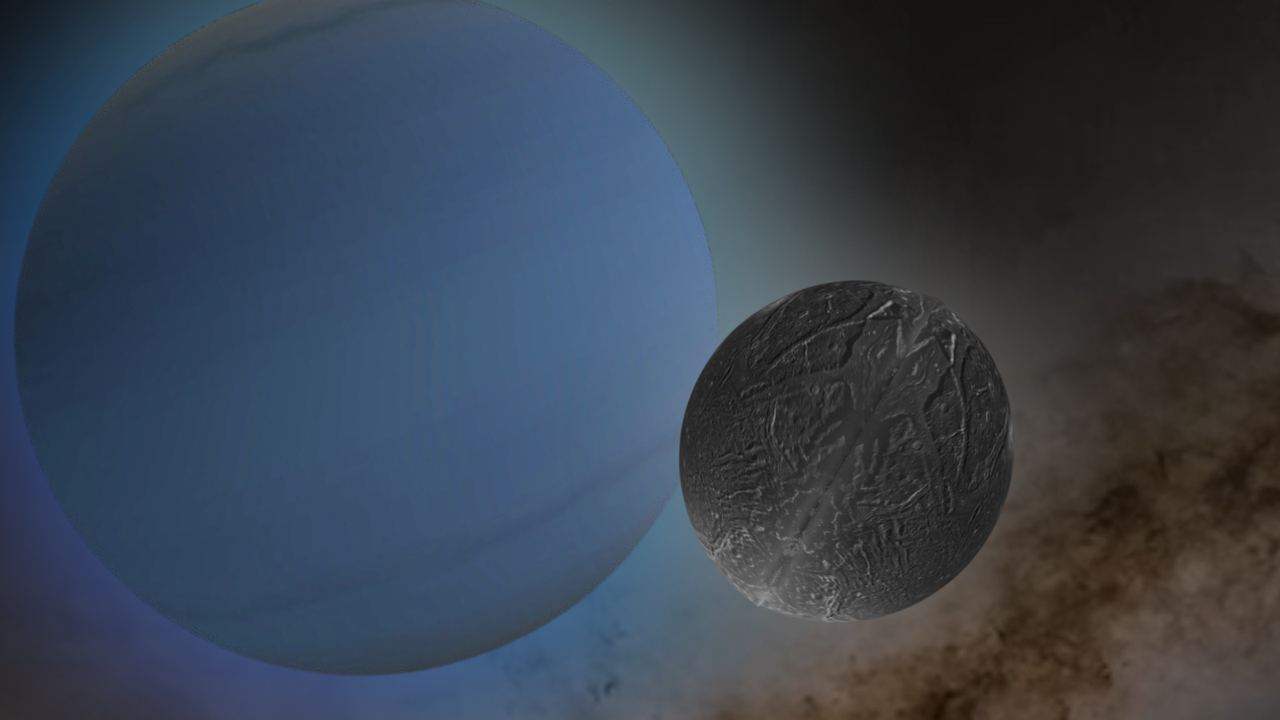A recent study indicates that Ariel, one of Uranus’ moons, may have once harbored a significant ocean beneath its icy surface. Researchers found evidence of this hidden ocean, which could have been more than 100 miles (approximately 170 kilometers) deep. These findings contribute to the growing body of evidence that several moons of Uranus were potentially ocean worlds in the distant past.
Ariel, measuring 720 miles (about 1,159 kilometers) across, is smaller than many of the moons orbiting Jupiter and Saturn. Despite its size, its surface is strikingly bright and complex. The terrain features ancient craters alongside younger, smoother plains likely shaped by cryovolcanism, a volcanic process that occurs on icy bodies.
Unfolding Ariel’s Secrets
The research team, led by Caleb Strom from the University of North Dakota, aimed to uncover the past interior structure and orbital characteristics of Ariel. They focused on its orbital eccentricity—how much its orbit deviated from a perfect circle. To achieve this, the team modeled how the gravitational forces of Uranus would have affected Ariel over time, leading to the fracturing and reshaping of its icy crust.
Their analysis suggested that Ariel’s orbit once exhibited an eccentricity of around 0.04, approximately 40 times greater than its current state. This eccentricity would have made Ariel’s orbit four times more eccentric than Europa, one of Jupiter’s moons known for its fractured and geologically active surface. The researchers concluded that the extensive cracks and ridges observed on Ariel can only be explained if the moon’s crust flexed over a liquid layer, indicating the presence of a significant ocean beneath a thin ice shell.
Alex Patthoff, a senior scientist at the Planetary Science Institute in Arizona and co-author of the study, emphasized the necessity of an ocean to explain the observed geological features.
Implications for Planetary Science
This study follows a similar investigation conducted in 2024, which found evidence of a subsurface ocean on Miranda, another moon of Uranus. Together, these discoveries suggest that Uranus may have hosted multiple moons with oceanic characteristics. Tom Nordheim, also a co-author and principal investigator at the Johns Hopkins University Applied Physics Laboratory, remarked on the implications of these findings, stating, “We are finding evidence that the Uranus system may harbor twin ocean worlds.”
Subsurface oceans are of particular interest to planetary scientists, as they could potentially provide habitats for life. The presence of liquid water is essential for biological processes, and under icy shells, energy from tidal heating or radioactive decay can sustain life, even in environments far from the sun.
While the exact timeline of Ariel’s ocean formation, its duration, and its current status remain unclear, the research offers critical insights into the evolution of such oceans in the outer solar system. This work also reinforces the growing calls for a dedicated mission to Uranus.
The proposed Uranus Orbiter and Probe, identified as NASA’s top priority flagship mission for the period from 2023 to 2032, aims to orbit the planet for at least five years, deploy an atmospheric probe, and explore its rings and moons in detail. Although funding has yet to be allocated, scientists argue that such a mission could address significant questions about Uranus’ extreme tilt, its intricate ring system, and its potentially ocean-bearing moons.
Currently, spacecraft have only been able to image the southern hemispheres of Ariel and Miranda. The models produced by the research team may aid in predicting what future missions could uncover in the unexplored northern regions, including additional geological features. As Nordheim stated, “Ultimately, we just need to go back to the Uranus system and see for ourselves.”
The findings of this study were published in the January 2026 edition of the journal Icarus.
